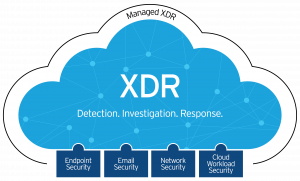Researchers found security pitfalls in IBM’s cloud infrastructure

Security researchers recently probed IBM Cloud’s database-as-a-service infrastructure and found several security issues that granted them access to the internal server used to build database images for customer deployments. The demonstrated attack highlights some common security oversights that can lead to supply chain compromises in cloud infrastructure.
Developed by researchers from security firm Wiz, the attack combined a privilege escalation vulnerability in the IBM Cloud Databases for PostgreSQL service with plaintext credentials scattered around the environment and overly permissive internal network access controls that allowed for lateral movement inside the infrastructure.
PostgreSQL is an appealing target in cloud environments
Wiz’ audit of the IBM Cloud Databases for PostgreSQL was part of a larger research project that analyzed PostgreSQL deployments across major cloud providers who offer this database engine as part of their managed database-as-a-service solutions. Earlier this year, the Wiz researchers also found and disclosed vulnerabilities in the PostgreSQL implementations of Microsoft Azure and the Google Cloud Platform (GCP).
The open-source PostgreSQL relational database engine has been in development for over 30 years with an emphasis on stability, high-availability and scalability. However, this complex piece of software was not designed with a permission model suitable for multi-tenant cloud environments where database instances need to be isolated from each other and from the underlying infrastructure.
PostgreSQL has powerful features through which administrators can alter the server file system and even execute code through database queries, but these operations are unsafe and need to be restricted in shared cloud environments. Meanwhile, other admin operations such as database replication, creating checkpoints, installing extensions and event triggers need to be available to customers for the service to be functional. That’s why cloud service providers (CSPs) had to come up with workarounds and make modifications to PostgreSQL’s permission model to enable these capabilities even when customers only operate with limited accounts.
Privilege escalation through SQL injection
While analyzing IBM Cloud’s PostgreSQL implementation, the Wiz researchers looked at the Logical Replication mechanism that’s available to users. This feature was implemented using several database functions, including one called create_subscription that is owned and executed by a database superuser called ibm.
When they inspected the code of this function, the researchers noticed an SQL injection vulnerability caused by improper sanitization of the arguments passed to it. This meant they could pass arbitrary SQL queries to the function, which would then execute those queries as the ibm superuser. The researchers exploited this flaw via the PostgreSQL COPY statement to execute arbitrary commands on the underlying virtual machine that hosted the database instance and opened a reverse shell.
With a shell on the Linux system they started doing some reconnaissance to understand their environment, such as listing running processes, checking active network connections, inspecting the contents of the /etc/passwd files which lists the system’s users and running a port scan on the internal network to discover other servers. The broad port scan caught the attention of the IBM security team who reached out to the Wiz team to ask about their activities.
“After discussing our work and sharing our thoughts with them, they kindly gave us permission to pursue our research and further challenge security boundaries, reflecting the organization’s healthy security culture,” the Wiz team said.
Stored credentials lead to supply chain attack
The gathered information, such as environment variables, told the researchers they were in a Kubernetes (K8s) pod container and after searching the file system they found a K8s API access token stored locally in a file called /var/run/secrets/kubernetes.io/serviceaccount/token. The API token allowed them to gather more information about the K8s cluster, but it turned out that all the pods were associated with their account and were operating under the same namespace. But this wasn’t a dead end.
K8s is a container orchestration system used for software deployment where containers are usually deployed from images — prebuilt packages that contain all the files needed for a container and its preconfigured services to operate. These images are normally stored on a container registry server, that can be public or private. In the case of IBM Cloud it was a private container registry that required authentication.
The researchers used the API token to read the configurations of the pods in their namespace and found the access key for four different internal container registries in those configuration files. The description of this newly found key in IBM Cloud’s identity and access management (IAM) API suggested it had both read and write privileges to the container registries, which would have given the researchers the ability to overwrite existing images with rogue ones.
However, it turned out that the key description was inaccurate and they could only download images. This level of access had security implications, but it did not pose a direct threat to other IBM Cloud customers, so the researchers pushed forward.
Container images can contain a lot of sensitive information that’s used during deployment and later gets deleted, including source code, internal scripts referencing additional services in the infrastructure, as well as credentials needed to access them. Therefore, the researchers decided to download all images from the registry service and use an automated tool to scan them for secrets, such as credentials and API tokens.
“In order to comprehensively scan for secrets, we unpacked the images and examined the combination of files that made up each image,” the researchers said. “Container images are based on one or more layers; each may inadvertently include secrets. For example, if a secret exists in one layer but is deleted from the following layer, it would be completely invisible from within the container. Scanning each layer separately may therefore reveal additional secrets.”
The JSON manifest files of container images have a “history” section that lists historical commands that were executed during the build process of every image. In several such files, the researchers found commands that had passwords passed to them as command line arguments. These included passwords for an IBM Cloud internal FTP server and a build artifact repository.
Finally, the researchers tested if they could access those servers from within their container and it turned out that they could. This overly permissive network access combined with the extracted credentials allowed them to overwrite arbitrary files in the build artifact repository that’s used by the automated IBM Cloud build process to create container images. Those images are then used in customer deployments, opening the door to a supply chain attack.
“Our research into IBM Cloud Databases for PostgreSQL reinforced what we learned from other
cloud vendors, that modifications to the PostgreSQL engine effectively introduced new
vulnerabilities to the service,” the researchers said. “These vulnerabilities could have been exploited by a malicious actor as part of an extensive exploit chain culminating in a supply-chain attack on the platform.”
Lessons for other organizations
While all of these issues have already been privately reported to and fixed by the IBM Cloud team, they are not unique to IBM. According to the Wiz team, the “scattered secrets” issue is common across all cloud environments.
Automated build and deployment workflows often leave secrets behind in various places such as configuration files, Linux bash history, journal files and so on that developers forget to wipe when deployment is complete. Furthermore, some developers accidentally upload their whole .git and CircleCI configuration files to production servers. Forgotten secrets commonly found by the Wiz team include cloud access keys, passwords, CI/CD credentials and API access tokens.
Another prevalent issue that played a critical role in the IBM Cloud attack is the lack of strict access controls between production servers and internal CI/CD systems. This often allows attackers to move laterally and gain a deeper foothold into an organization’s infrastructure.
Finally, private container registries can provide a wealth of information to attackers that goes beyond credentials. They can reveal information about critical servers inside the infrastructure or can contain code that reveals additional vulnerabilities. Organizations should make sure their container registry solutions enforce proper access controls and scoping, the Wiz team said.
READ MORE HERE



